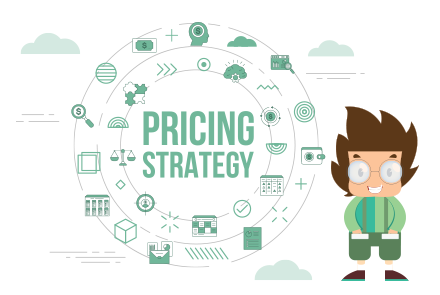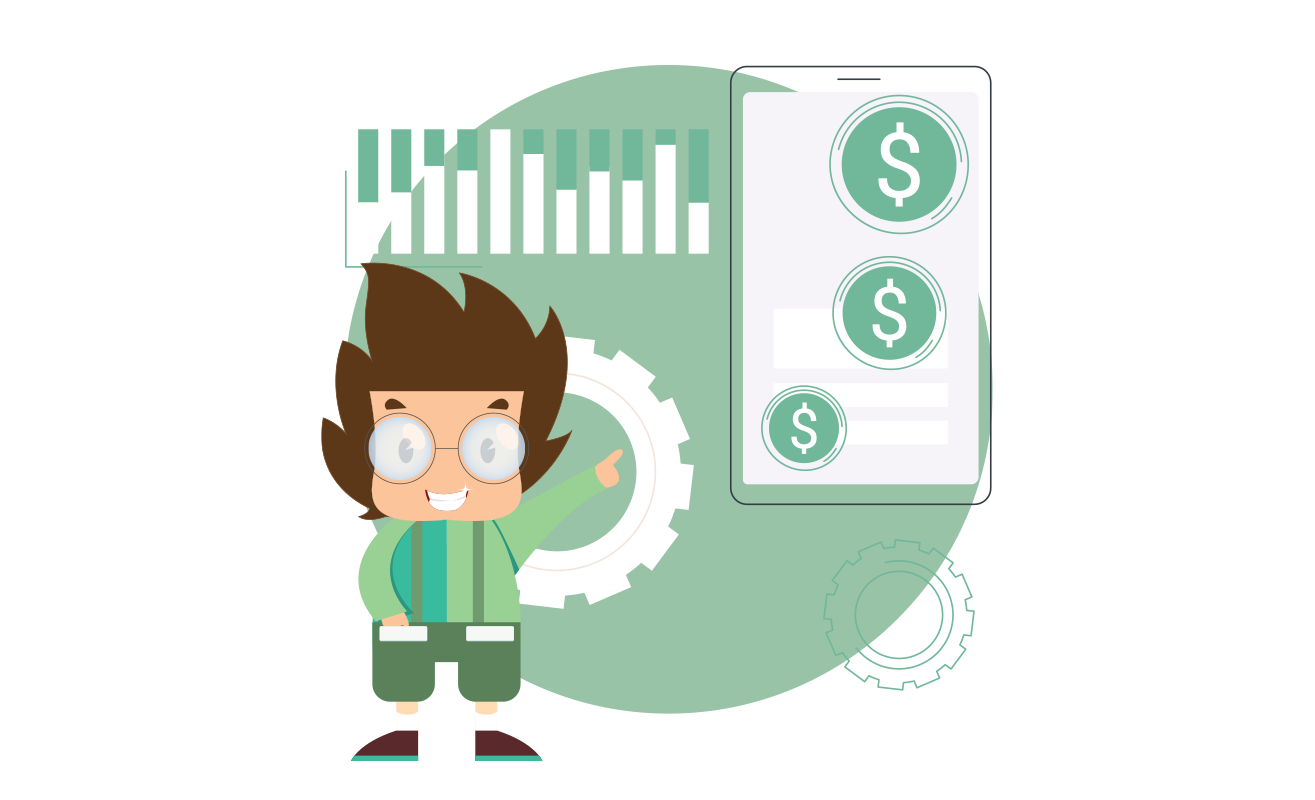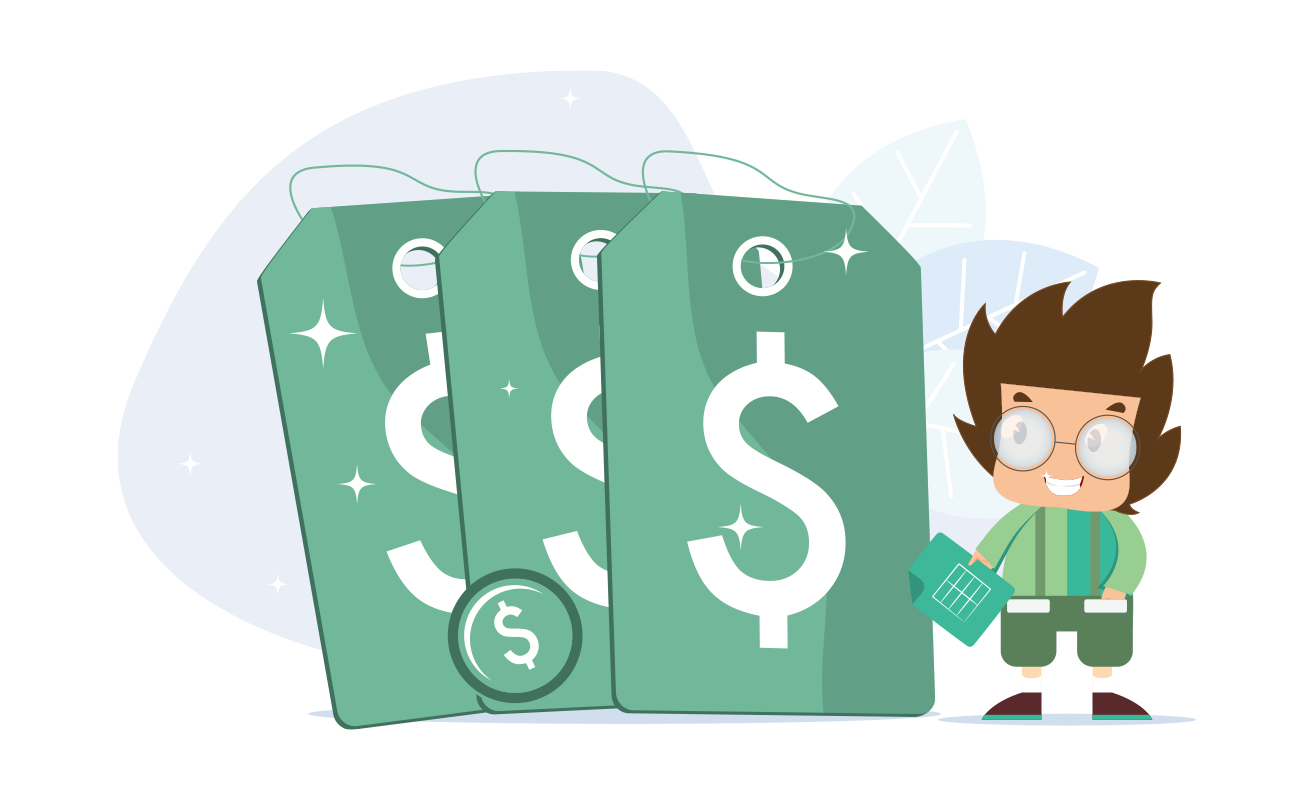Your Guide for Pricing Strategies, Types, And How to Use It?
Finance
LAST UPDATE: DEC 11, 2022
12 minutes reading
Pricing issues can keep you up at night. If you undervalue your offer, you will lose money. If you overcharge for it, you may lose out on sales that may have made your year.
Too many businesses set their prices without giving them any attention. This is a mistake causing them to leave money on the table from the beginning. The good news is that taking the time to correctly price your products can work as a potent growth lever. You will generate substantially more income than a company that approaches pricing more passively if you optimize your pricing strategy so that more customers are paying a higher price. Even though it seems apparent, organizations rarely spend much time determining the optimal pricing approach.
Why Product Pricing Strategies Are Important
Depending on its pricing, a good product may succeed or fail on the market. Customers will hunt for less expensive options if it’s thought to be overly expensive, which will result in lost sales. You might sell a decent amount if it’s too low, but your profit margins will suffer.
The price of a product also influences how potential customers will view its value and how valuable your brand is. It can give a clearer view of a product’s appeal, utility, acceptance, or quality. From a competitive standpoint, underpricing a product may be advantageous, but for the incorrect product, it may also cause consumers to doubt its worth. Additionally, if you depend on retail establishments like supermarkets to stock your products, they could give priority shelf space to more expensive competitors since they generate more profit even though they provide customers with less value for their money. In this instance, lowering your prices can make you less competitive rather than more.
And of course, a multichannel selling strategy is crucial to take into account in the modern era where customers can purchase their goods from a vast variety of vendors and platforms. If you solely sell in-person, think about whether online sales can be viable as well. If you already sell on various platforms, think about how your price points might differ on each. Additionally, if a multichannel strategy is the best option for you, be sure to use a reliable multichannel order management system to assist you to keep track of and simplify your operations since otherwise, things could become quite challenging.
The 10 Main Pricing Strategies
As we’ve just mentioned, project management and strategic, practical choices go into determining a product’s price. Here are the main 10 various pricing techniques that you as a small business owner should take into consideration:
1. Value-Based Pricing
Value-based pricing delivers on its promise. With this strategy, a company will set the pricing of its products primarily based on the real or perceived value of the product or service.
It frequently works best for specialized products, bespoke or expert services, and handcrafted commodities like jewelry, high-end clothing, or luxury alcoholic beverages. It can also be effective for products that come with extras or are well-known due to their connections to notable individuals or occasions. Value-based pricing, if done correctly, will result in greater revenues for you. However, it can be a time-consuming and complicated technique, so weighing up the balance is important.
2. Competitive Pricing
Setting a price that will provide you with a competitive edge over similar products being sold by other businesses is the essence of competitive pricing. This tactic is frequently employed in oversaturated marketplaces and with well-known, mass-produced goods, such as chewing gum, big-box beer, household goods, or services like cleaning or dining.
It can also be used by companies that sell a variety of goods and want to utilize the cost of one item as a point of entry for buyers to purchase other items.
Due to the nature of competitive pricing, you must continually monitor your competitors. When companies lower their rates or run special discounts, you’ll want to know. Additionally, you should consider how to use innovative product marketing strategies to provide your items a competitive edge, particularly when undercutting isn’t a financially viable option. To stay on top of your competitor’s movements if you choose this course of action, especially if they are numerous or aggressive, you’ll need a strong tracking system.
3. Price Skimming
In price skimming, a new product’s price is initially set high to capitalize on consumer demand before gradually being lowered over time. It works best for products that are hotly awaited, ground-breaking, or of the moment and that lack any significant rivals.
The two biggest areas for price-skimming are electronics and gaming. Consider how expensive new Apple products sell or how buyers will pay top dollar for the newest PlayStation even if they know the price will soon drop or that a new version will be launched in 12 to 18 months.
4. Cost-Plus Pricing
One of the most popular pricing strategies is cost-plus pricing, which is frequently utilized by supermarkets and department stores with a large selection of common products as well as smaller firms that can’t afford to invest a lot of money in market research. Calculate the costs involved in producing a good (or providing a service), and then add a markup based on how much profit you intend to achieve.
It’s a straightforward approach to figuring out costs, and the clear pricing structure can also assist brands in defending their charges.
5. Penetration Pricing
The opposite strategy from price skimming is used in penetration pricing. It occurs when a company trying to break into a market offers a low initial price point to draw customers in and entice them away from rivals. The notion is that the price can be gradually raised after the product gains popularity and credibility on the market.
It can be a useful product marketing strategy for introducing a product or brand to a big audience. Online subscriptions frequently use this strategy, giving you a free month or half off the regular price in the hopes that you will continue using the service after your promotional time has ended. It is also employed by taxi services like Uber and its competitors.
6. Economy Pricing
Budget-friendly items are those with economy pricing. Low production costs enable low prices to be maintained. This works best with things produced in large quantities, and it is something that major corporations, like pharmaceutical firms or airlines, can readily take advantage of to undercut competitors and boost sales.
Grocery stores frequently employ economy pricing by manufacturing their no-frill lines of basic goods like condiments or biscuits. When done correctly, it can be highly beneficial because there is always a market for frugal shoppers or people who are tightening their purse strings to save money or pay off debt.
Additionally, if consumers turn away from premium goods in favor of the basics, it’s a successful strategy to expand into a market or weather economic downturns. However, the business might be challenging. Competition can be fierce, and consumers who are more interested in price than quality are more likely to switch brands when one company lowers its prices.
7. Dynamic Pricing
A flexible pricing mechanism to assist maximize earnings is called dynamic pricing. It’s the process through which a company adjusts the price of its goods according to the purchaser, the location, and the time of sale.
Due to multichannel selling and artificial intelligence, organizations are using it more frequently. Consider Uber as an example. Regular users of the service might be accustomed to paying a particular cheap fare to get home from the train station, but when the weather is poor or rush hour arrives, the car service will raise pricing to increase revenue. A similar strategy is applied in the travel and hotel sector during the busiest travel times as well as in sports during important games.
8. Premium Pricing
Businesses that charge premium prices do so because they have a distinctive product or brand that no one else can match. If you have a large competitive edge and are confident that you can charge a higher price for your product without having it undercut by one of comparable quality, you should think about utilizing this technique.
A company has to put a lot of effort into creating the perception of value because buyers need to believe that the products are worth the higher price tag. Business owners should make sure that their products are of a high standard and that the packaging, interior design of the store, and marketing plan all work together to justify the high cost.
9. Bundle Pricing // Multiple pricing
Small firms can offer several products at a discounted price by bundling them instead of selling them separately. Customers believe they are getting more value for their money. At the end of a product’s life cycle, many small businesses opt to use this method, particularly if the product is slow-selling. Small business owners need to remember that the earnings from higher-value products must offset the losses from lower-value products. They should also think about the money they’ll save by discontinuing older products in terms of overhead and storage space.
10. Freemium Pricing
A free service or product is provided to a consumer unless they choose to access premium features or services inside that product. This pricing model is known as freemium. Most suitable for small businesses that want to provide both free and paid versions of their products, as well as those that provide free trials.
Pros And Cons of Different Pricing Strategies
|
Pros |
Cons |
|
|
Cost-plus Pricing |
The quickest way to price
|
Excludes consideration of the value to the customer |
|
Competitive Pricing |
Simple: adapts to prices of rivals
Aggressive pricing: advantageous for businesses with healthy margins.
Discounted pricing: protects market leadership |
Much attention to what others are doing.
Financial difficulties may result from lower prices if sales volume declines.
Ignoring competition could leave you open to market surprises. |
|
Price Skimming |
Its high initial prices aid in covering development expenses.
|
Copycat items may reduce the potential for later-stage sales. |
|
Penetration Pricing |
Because of its much cheaper cost, consumers might switch brands.
|
Price wars and artificially cheap prices may become commonplace. |
|
Value-based Pricing |
A plus for high-tech goods, handcrafted goods, and other distinctive services. | Not advantageous for products when differentiation is not a crucial factor. |
|
Dynamic Pricing |
Permits pricing to reflect the demand for the good or service in the market. Reveals more information about consumer demand and purchasing trends.
|
The heightened danger of pricing wars. Increases industry-wide competitiveness. |
|
Premium Pricing |
Makes your brand seem more appealing. Higher margins of profit. gives one a competitive edge |
Higher production and marketing expenses. A more limited audience. decrease in sales volume |
How to Create a Pricing Strategy
When selecting a strategy for product pricing, there are several things to take into consideration. Some of them are listed below:
Evaluate Pricing Potential
Pricing potential is the highest price that a good or service could command given its cost, demand, and other factors. One must take into account every element that may have an impact on the price when choosing a pricing strategy and arrive at an appropriate figure.
Know the Audience
When setting a product’s pricing, one must take into account the needs of the customer and the reasons and methods for which they will utilize the product. The value that customers will identify with the product will also be taken into consideration when determining how much they are willing to pay for it.
Analyze Past Data
Analyze how well the prior product price schemes performed. One can build their current plan by what has or has not worked in the past once they are aware of what has or has not.
Look at the Competition
Without initially taking a look at the prices of your competitors, you cannot select the pricing of your goods. Once you have a notion of the pricing differential between your goods and those of the competition, you have two options to keep one step ahead of them:
Beat their price: Price your product more than that of the competition if they are charging more for an item that is similar to yours.
Beat their Value: Customers will still buy your goods if you price more than the competitors if you provide greater value than they do.
3 Pricing Strategy Examples
The easiest way for a business to comprehend the above-mentioned pricing strategies is through real-world pricing strategy examples. The appropriate pricing plan is built on math, market research, and consumer insights, so analyzing other companies’ methods can be a smart place to start. For the time being, let’s examine some of the major brands in existence with today’s pricing strategies:
Streaming Services
Have you ever noticed that the cost of Netflix, Amazon Prime Video, Disney+, Hulu, and other streaming services is essentially the same? This is because these businesses have implemented competitive pricing or at least a subset of it known as market-based pricing.
Salesforce
When Salesforce first debuted, it was the only cloud-based CRM available. (Back then, it wasn’t even referred to as “the cloud”) Salesforce could charge whatever it wanted because it had an innovative implementation and a large corporation as its target customer. They were able to cut their fees later, when they had grown, to encourage small enterprises to sign up. This is a well-known instance of price skimming.
Dollar Shave Club
When Dollar Shave Club first started, you couldn’t turn on the TV without seeing an advertisement touting how much less expensive they were than store-bought razors. They were using economy pricing even though an aggressive marketing campaign and that kind of promotion are atypical for the price model. They got good results from it. In 2016, Unilever purchased them for an alleged $1 billion.
Product Pricing Strategies in Marketing
Pricing strategies are a plan or techniques for choosing the most competitive price for a good or service. It assists you in setting prices while taking customer and market demand into account to maximize profits and shareholder value.
The Bottom Line
All pricing strategies are double-edged swords. Some clients will be turned off by what draws them in. you can’t please everyone all the time. Just keep in mind that you want the buyer to purchase your product, thus you must use a strategy that suits your target audience.






Recent Comments